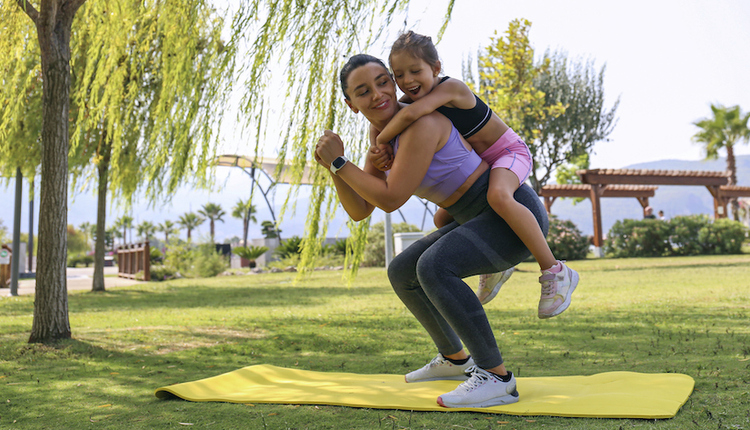I was riding the escalator when a man and woman in warm-up outfits came trotting up the stairs behind me. "I was just telling my wife about your session." The wife jumped in, "We're going home with great ideas but ... what's the best way to make more money?"
I wretched, gagged and vomited on their shoes (no, I didn't, but I might have). I'm so often confronted with the "what's the best way" question I'm a short distance from associating it with the gag reflex. The two partner-trainers were very nice people, and we spent 30 minutes talking. I believe I helped them understand why "the best way" doesn't exist.
Imagine a prospective client asks: "What's the best way to cure hypertension?" You know that 95% of hypertensive cases fall under the category of Primary Hypertension, a multi-factorial result of lifestyle choices and stress interpretation. There isn't a "best way." There are many pieces of the puzzle that all must be pulled together.
What's the best way to lose fat? To build muscle? What's the best way to catch a fish? We live in a myopic world where Twitter has taught us to communicate in 140 characters. We Google "the best way to cook hot dogs," or "the best way to fix a garbage disposal," and in some of those immediate need cases we find answers.
When we talk about changing a body, or business, we're looking at complex living entities that grow or deteriorate based on a number of stimuli. A careful examination of profits and losses, business practices, marketing energies, and revenues and expenditures can provide clues, and with those clues you might isolate three strategies you can change or employ to facilitate positive change.
With clients you consider three elements: eating, aerobic stimulation and resistance training. When we add in rotation, kinesthetic awareness, postural improvement, etc. the complexity can prove overwhelming. Making three interrelated shifts is enough to put positive outcome in motion.
I cannot give you "the best way," but I can provide "the three best ways," and you can pick and choose which best connect with your personal needs. Today, assuming you're a personal trainer conducting one-on-one sessions with a foundation of clients, I'll share the three best ways to earn more.
The Three Best Ways to Give Yourself a Raise
1. Look at the value you deliver.
Consider what an hour of your time is worth, based solely on the value you deliver. Once you're secure with a fixed number, look at your income over the past 90 days and determine what you actually get paid per working hour. If the answer is lower than what you've determined your value to be, grab hold of your sensibility and realize you deserve more than you're receiving. Then, raise your rates. How? Choose 10 clients and tell them that as of a given day your rates are going up $4 a session. That will bring you the confidence to recognize it's OK to ask every client to pay you in line with the value you deliver. With 30 sessions weekly, the simple $4 increase brings near $500 extra per month without any additional work, and in most cases you'll see your way clear to raise rates by significantly more than $4.
2. Ask clients to train more frequently.
We often get caught up in "what is" and neglect to consider "what may be." We sometimes build twice-per-week relationships with clients, but within a matter of weeks, our value is clearly established. Rarely will personal trainers pose the question, "Would you like to train more often?" There is an art to posing the question so it feels non-threatening. "Judy, I have three slots I'm going to fill with new clients, but before I bring in anyone new, I wanted to see if any of my current clients would like to take advantage of this opportunity. Would you like to work with me an additional hour per week?" Will everyone say yes? No, but somebody will. If you charge $60 per session, three more sessions per week brings you an extra $700 per month, an $8,000 annual raise without needing to go on an aggressive client hunt.
3. Make up "the gift of health."
This is the only one that requires a small investment in marketing material, but it need not exceed $100. The return can be tens of thousands. The gift is actually a nicely printed card, tradable for one session with a new client, ideally in an attractive branded envelope. Ask some local fitness, nutrition or athletic clothing shops if they’d like you to add their promotional materials to your marketing. Require that they give you a certificate that fits in your envelope offering a discount (15% off is fine or "buy one get one free" is OK). The gift is a certificate for a training session with you, value enhanced by money-saving opportunities with local merchants. You don't call it free. You make it apparent that the person buying the certificate paid for it and you include the value (i.e. The person granted this Gift of Health can use this card for one personal training session (value $60). Sell it to existing clients at $9, and they gift the certificates to friends and associates who would benefit from your services. Nobody perceives that you're discounting your rate, clients see extreme value in the gift purchase, and the person who receives and uses the gift is a strong client candidate. Let all of your clients know "The Gift" is available. You'll be surprised how many opt to take advantage of this gift repeatedly.
Phil Kaplan shares his insights into improving profitability and potential in his ASPIRE program for Personal Trainers. Go towww.everypersonaltrainer.com and request, The Three Best Ways to Attract the Unwell Market, and The three Best Ways to Develop Career Security available as a pdf download. Find additional materials atphil@philkaplan.com.











